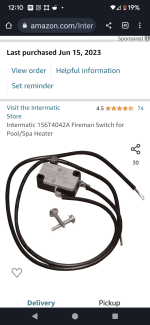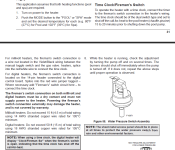- May 4, 2018
- 65
- Pool Size
- 28000
- Surface
- Vinyl
- Chlorine
- Salt Water Generator
- SWG Type
- CircuPool RJ-60 Plus
I'm installing a new Raypak Digital 336A heater and am looking to do a simple control using an intermatic timer and a "Fireman's Switch" (see product attached). Raypak's manual offers 2 options for dry contact control of the heater. I can wire to their "Fireman's switch " circuit or to their "Remote" circuit. Seems like both ways will achieve the same result with some subtle differences. Just wondering if their might be some pros and cons to doing it one way vs the other?
For background a simple control where I could have the heater kick on early in the morning on days when I know we'll be entertaining etc is all I need. 75 % of my season the heater will not be in use. I only have a pool, no spa.
Thanks
For background a simple control where I could have the heater kick on early in the morning on days when I know we'll be entertaining etc is all I need. 75 % of my season the heater will not be in use. I only have a pool, no spa.
Thanks



